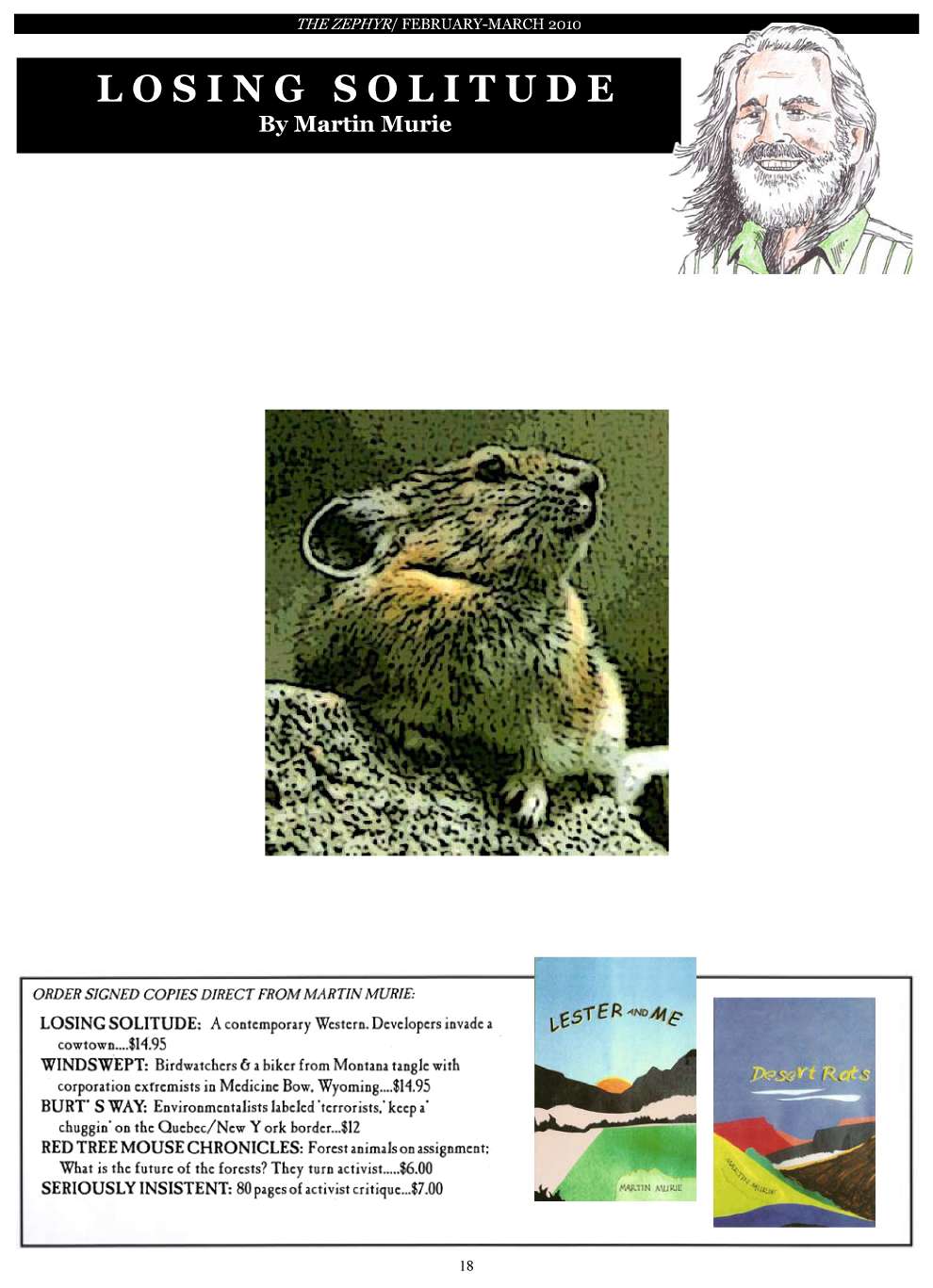
NOT SO CHARISMATIC CREATURES
The Pika, aka cony, are very small rabbit-like animals, but actually it belongs to a different famly, Ochotonidae. The rabbit fmily is Leporidae. The
Cony of bible lore is an entirely different animal. Lately, field
biologists have noticed that in certain regions of the mountain west,
Conys have disappeared and in other mountain ranges the population has
moved up to somewhat higher elevations. Conys are extremely sensitive
to small elevations of environmental tempera-tureas,. At higher
elevations grasses and forbs exist in a more tundra-like distribution
than at lower elevations. Whether Conys will be able to store enough
hay for winter warmth and food remains to be seen. They are not
hibernators. They store huge stacks of hay, using summer months to do
it, mouthful by mouth-
gas—methane—global
warming will accelerate.. It is already too late to halt global
warming; it's with us for a long time, due to inertia of global
systems. It might be too late to save our own species, because we are
not yet fully aware of our dependence on natural processes far more
powerful than most of our gadgetry—huge ocean and atmospheric engines
that fuel our weather.
In
Copenhagen the debates were relatively trivial, except for the dramatic
walkout of poor nations. By trivial I mean the discussion of
falsification of data by a
ful..
Another more obvious sensitivity situ
ation is the beetle, Dondrocnus spp. They have also been able to survive winter at higher elevations due to slight changes in global temperatures. The result is devasta
tion of white-bark pine forests, a high altitude species. In some areas more than half the white-barks are dying, girdled by Den-drocnus larvae. Grizzly bears and Clark's nutcrackers and other high altitude jays depend on abundant crops of white-bark pine cones.
ation is the beetle, Dondrocnus spp. They have also been able to survive winter at higher elevations due to slight changes in global temperatures. The result is devasta
tion of white-bark pine forests, a high altitude species. In some areas more than half the white-barks are dying, girdled by Den-drocnus larvae. Grizzly bears and Clark's nutcrackers and other high altitude jays depend on abundant crops of white-bark pine cones.
Grizzly
bears also eat spider webs as part of their diet before hibernation,
and their dependence on whitebark pine cones is equally well
established. The above ex
amples of extremely subtle affects of global warming, aka Climate Change, are not no
ticed much by our media. Why? Because we and our media are not ecologically-minded. It takes some thought to realize that we are more dependent on ecosystem functions than all of our technology put together. In fact, our technology carries with it an extremely heavy destructiveness—coal-fired power plants, removal of mountain-tops and sagebrush plains to get more coal, feeding meat animals a huge fraction of our
amples of extremely subtle affects of global warming, aka Climate Change, are not no
ticed much by our media. Why? Because we and our media are not ecologically-minded. It takes some thought to realize that we are more dependent on ecosystem functions than all of our technology put together. In fact, our technology carries with it an extremely heavy destructiveness—coal-fired power plants, removal of mountain-tops and sagebrush plains to get more coal, feeding meat animals a huge fraction of our
few
scientists. Please look up James Han-sen on the internet for his
succinct evaluation of those mis-managements of data that the
offending scientists are now ashamed to have made, or should feel shame.
Meanwhile
the northern seas' ice pack looked good as surveyed by satellite
photos, but at ice level, undetected by satellite imagry, the ice is
much thinner. There are stories of the weight of one bear breaking a
floating bit of ice.
Let's
return to those subtleties in ecosystems caused by small increases in
environmental temperatures—the cony example and the white-bark pine
example. How many other subtleties that have huge effects on ecosystems
lie ahead of us? We have got to make it a habit to pay attention to the
majority of species, the invertebrates: bacteria, viruses, horseshoe
crabs, clams, mussels, molluscs, insects et al. These are entangled in
food webs and other webs that make up world ecosystems. Can we afford
to bypass them in our struggle to save charismatic species. No.
The latest isssue of Wings, the journal of the Xercses Society
(info@xerces.org), examines the "piggy back" effect—the extent to which inverte-
grain
crops to fatten them up so that we can become overweight . . the list
is long, and we all know it. What holds us back from an ecological view?
I
think a huge factor is our dependence on fossil fuels to the extent
that we can't imagine a change that would remove us from that burden.
CO2 is bad enough, but now that tundras are softening, releasing an
even more potent greenhouse
brate
endangered species can be saved by habitat reserves for the
chaismatics. Often it works, but not always. One example, and I quote
from Piggyback Conservation, by ClaireKremen: "The excellent work of
Hawiaii-based entomologist Dan Rubinoff clearly